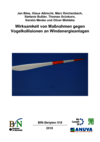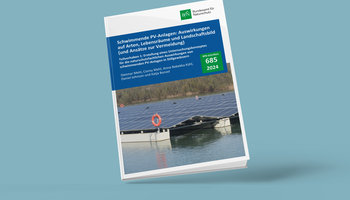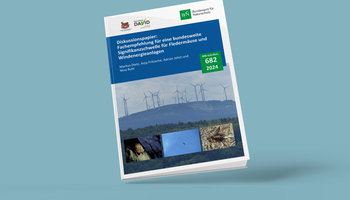There is a wide range of current measures used to minimise the adverse effects of wind turbines on birds. These include regulating the operation of the turbine, preventing birds being attracted to it or scaring them away using noise or optical stimuli. In order to study the effectiveness of these kind of measures, the project will develop a research plan as a contribution to encouraging an environmentally compatible expansion of wind power.
With the increasing expansion in land-based wind energy, more sites are being used which create a conflict with nature conservation. Birds in particular can be negatively affected by this expansion in wind energy. In order to keep the negative effects to a minimum and to prevent the occurrence of prohibitory species protection provisions for birds (in accordance with Section 44 of the Federal Nature Conservation Act, BNatschG), mitigation measures are increasingly being carried out in the area affected by wind turbines. However, the effectiveness of these measures has not so far been studied enough from a nature conservation viewpoint. The project therefore develops a methodology for determining the effectiveness and therefore the success of selected measures.
In the first step, the existing information (e.g. studies, expert reports, practical experience from ecological research, data from field studies, approval notifications, decrees and guidelines from the German regions and legal judgements) will be analysed and tested for their usefulness in terms of this research question.
Following this a selection of mitigation measures at WT will be made. This will require an evaluation methodology, where the criteria for the selection will relate to factors such as the state-of-the-art, species-specific effectiveness and feasibility. Based on this, the type and scope of the necessary research will be determined in terms of data analysis and evaluation of the suitability of the measures.
The result of the project include a research plan for a potential follow-up study on the effectiveness of mitigation measures for the impacts of wind turbines on the avifauna. This project will not include any practical investigations.
The aim of the project was first to review the large number of mitigation measures in terms of the information available on their effectiveness. The main focus here was on prevention of bird collisions at wind turbines. In a second step, specific mitigation measures are to be selected in order to develop research plans for proof of effectiveness.
Important findings at this point are:
Besides classifying the measures in terms of information on their effectiveness, there are two proposals for research concepts on the project results: for the mitigation measures "operational regulation (shutdown) during specific agricultural management events" and on the effectiveness of "control measures" (quantification of habitat preferences in the space utilisation behaviour of raptors at risk of collisions in relation to the distribution and quality of food areas).

Wirksamkeit von Maßnahmen gegen Vogelkollisionen an Windenergieanlagen
BfN-Skripten 518 (2018)
BioConsult SH GmbH & Co. KG
Schobüller Str. 36, 25813 Husum
Jan Blew
Tel.: +49 4841 66329 12
j.blew(at)bioconsult-sh.de
ARSU – Arbeitsgruppe für regionale Struktur- und Umweltforschung GmbH
Escherweg 1, 26121 Oldenburg
Dr. Marc Reichenbach
Tel.: +49 441 9717493
reichenbach(at)arsu.de
Kerstin Menke
Tel.: +49 441 9717457
menke(at)arsu.de
ANUVA – Stadt- und Umweltplanung GbR
Nordostpark 89, 90411 Nürnberg
Klaus Albrecht, Stefanie Bußler
Tel.: +49 911 46262788
klaus.albrecht(at)anuva.de
Federal Agency for Nature Conservation
FG II 4.3 Nature conservation and renewable energies
Alte Messe 6, 04277 Leipzig
Jens Ponitka
Tel.: +49 341 30977 169
Jens.Ponitka(at)BfN.de
03.04.2024
Weiter

03.04.2024
Weiter

19.03.2024
Weiter
